Qatar: the friend of our enemy is not our friend. New questions raised on the anti-ISIS Alliance.
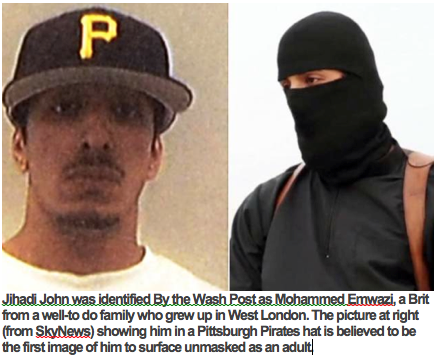 By Peter Lance © Updated Feb. 27th, 2015. With increasing questions about the commitment of certain Arab nations in the Alliance vs. The Islamic State (ISIS) recently underscored by the NYT re: Saudi Arabia’s murky links to the 9/11 attacks, it’s even more important to shed light on Qatar, the most strategic Alliance member which is home to Udein Air Base where the U.S. Central Command launches many of its bombing missions on ISIS targets in Syria and Iraq.
By Peter Lance © Updated Feb. 27th, 2015. With increasing questions about the commitment of certain Arab nations in the Alliance vs. The Islamic State (ISIS) recently underscored by the NYT re: Saudi Arabia’s murky links to the 9/11 attacks, it’s even more important to shed light on Qatar, the most strategic Alliance member which is home to Udein Air Base where the U.S. Central Command launches many of its bombing missions on ISIS targets in Syria and Iraq.
In an interview aired today on CNN Qatar’s Emir Sheikh Tamim bin Hamad Al-Thani told Christiane Amanpour, “I know that America and some countries they look at some movements as terrorist movements… But there are differences.” It would be a “big mistake,” he said to view every Islamic movement as terrorists.
Later today on a panel with Wolf Blitzer, former CIA case officer Robert Baer (quoted below) reminded viewers that Qatar not only employed 9/11 “mastermind” Khalid Shaikh Mohammed (KSM), but has regularly funded the pro-jihadist Muslim Brotherhood.
Qatar is also the Alliance member that accepted the five detainees from Guantanamo Bay Detention Camp, dubbed “The Taliban Five,” exchanged for U.S. Army Sgt. Bowe Bergdahl in May. As CNN reported, the swap had been brokered by the Qatari government and the five jailed jihadis were described at the time as “mid to high level officials of the Taliban regime.”
In an OP-ED piece in today’s NYT timed to his visit with President Obama, Al-Thani blamed terrorism “on the kind of hopelessness that abounds in the Syrian and Palestinian refugee camps, and in war-weary towns and villages in Syria, Iraq, Yemen, Libya and Gaza.” That from the head of an oil-rich nation with the highest per capita income in the Persian Gulf.
Qatar, which Fifa just announced will host the World Cup in the fall of 2022, is also the headquarters of the Al Jazeera Media Network and since 2002 it’s been host country to CENTCOM, nerve center of all U.S. military operations in the Middle East. That is a curious irony when one considers the pro-jihadi loyalties of Qatar’s ruling al-Thani monarchy.
On October 10th, 2014, the WSJ reported on “Qatar’s links with the main al Qaeda affiliate in Syria, Nusra Front, as well as with Hamas and the Taliban in Afghanistan.”
Three weeks later The Telegraph U.K. quoted David Cohen, the U.S. Treasury under-secretary for terrorism and financial intelligence as disclosing that, “Two of al-Qaeda’s most senior financiers are living with impunity in Qatar despite being on a worldwide terrorism blacklist.” The two Qataris — Khalifa Muhammad Turki al-Subaiy and Abd al-Rahman bin Umayr al-Nuaymi — are living in Doha, the country’s capital, and are free to go as they please,” Telegraph Chief Reporter Robert Mendick wrote, quoting Cohen.
In late January CNN’s Pentagon correspondent Barbara Starr cited military and intelligence sources who claimed that “one member of the so-called Taliban Five ‘has attempted to return to militant activity from his current location in Qatar.'”
But those recent disclosures pale when one considers the monarchy’s even deeper links to al Qaeda and its prior role in protecting KSM. In 1996 the regime in Doha, not only welcomed Osama bin Laden on his flight from Khartoum to Afghanistan, but they sheltered KSM that same year.
Worse, after the FBI got a tip from a sting of KSM’s nephew, World Trade Center bomb maker Ramzi Yousef and sent the elite Hostage Rescue Team (HRT) to the Qatari capital to grab Mohammed, the al-Thani government reportedly helped him escape.
In my 2004 HarperCollins investigative book: “Cover UP: What The Government Is still Hiding About the War on Terror,” I told the story of that FBI sting for the first time. It took place over an 11 month period at the MCC: The Metropolitan Correctional Center in Lower Manhattan, during which Colombo crime family capo Gregory Scarpa Jr.; son of notorious FBI Top Echelon Informant Gregory Sr., passed dozens of notes from Yousef to the FBI, while the terrorist, later convicted of the 1993 WTC bombing, was awaiting trial for the Manila Airliner Bombing (Bojinka) Plot. The financing for that plot, which involved smuggling IED’s onto a dozen U.S. bound jumbo jets, came from bin Laden’s brother-in-law Mohammed Jamal Khalifa. 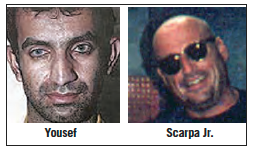
This piece on my website allows access to dozens of FBI 302 memos memorializing that sting, in which the FBI went so far as to set up a phony Mafia company called “Roma Corp,” to which Yousef made phone calls from the 9th floor tier at the jail that were intercepted by the Bureau and “patched-through” to Yousef’s contacts in the Middle East.
It was during one such call that the FBI’s Organized Crime and Terrorism Unit in the SDNY identified KSM’s presence in Doha and dispatched the snatch and grab team, only to find that Mohammed had been given a false I.D. by the Qataris and moved to the Czech Republic. Five years later he’d lead the “planes as missiles” plot, designed by Yousef in Manila in 1995 and bring down The Towers on September 11th.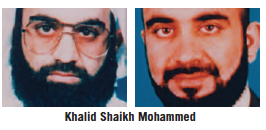
THE BACKGROUND ON QATAR
What follows is an excerpt from my third book for HarperCollins, “Triple Cross.” It begins with a brief discussion of Sphinx Trading, a check-cashing mailbox store in New Jersey where two of the 9/11 hijackers got their fake I.D.’s (to board AA #77) in the summer of 2001. The FBI had been onto that store for years, but failed to surveil it, even though it was linked to the 1990 murder of Rabbi Meir Kahane by El Sayyid Nosair, an al Qaeda terrorist who had been on the Bureau’s radar since the summer of 1989. 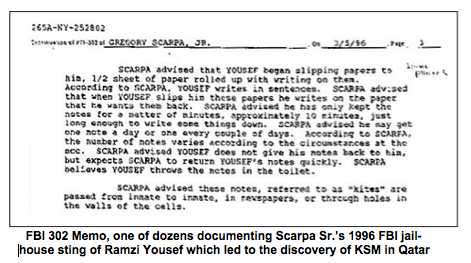
If the Feds had acted on that intelligence and gone into their files from the Kahane murder case, they might have remembered that El Sayyid Nosair had maintained a mailbox at Sphinx Trading, a Jersey City check cashing store on Kennedy Boulevard, four doors down from the blind Sheikh’s mosque.[i] They might have connected that dot to the man who was one of the two incorporators of Sphinx: one Waleed Abdu Al-Noor; listed by Patrick Fitzgerald and Andrew McCarthy as one of the 172 unindicted co-conspirators in the Day of Terror Trial, prosecuted the year before.[ii]
Perhaps the knowledge that Ramzi Yousef maintained an active al Qaeda cell in New York City in 1996 might have caused the FBI to undertake an ongoing surveillance of Sphinx Trading and its mailbox center. If they had, then five years later, in the summer of 2001, Bureau agents could have interdicted two of the 9/11 hijackers, Khalid Al-Midhar and Nawaf al-Hazmi, who obtained their fake IDs for the hijacking plot from Mohammed El-Atriss, the Egyptian who co-signed the incorporation papers on Sphinx Trading with Al-Noor. 
Phone records showed that El-Atriss had also been in regular phone contact that summer with Hani Hanjour, the pilot who flew AA Flight 77 into the Pentagon. It’s important to note that the Yousef intelligence gathered by Scarpa Jr., if properly pursued, would have advanced the FBI’s knowledge of the al Qaeda threat to New York exponentially.
By late May 1996, Scarpa Jr. had also uncovered Yousef’s threats to a federal judge and to Mike Garcia, the AUSA who was co-prosecutor in his upcoming Bojinka case.[iii] The Feds took these threats seriously enough that they sought protection for both individuals. By April, the quality of the Yousef intel was so good that the FBI decided to take the intelligence initiative to a new level, They actually went to the trouble and expense of setting up a phony Mafia front company, dubbed “Roma Corporation,” designed to monitor Yousef’s outside calls.
Ostensibly located in the Flatiron Building at Twenty-third Street and Fifth Avenue, in theory Roma Corp. was an ingenious trap. “The idea was to create a fictitious company that was supposedly a Mafia-run organization,” says Scarpa Jr.’s then lawyer Larry Silverman. “Yousef would make calls to that organization. They would then transfer his telephone calls to parties outside of the United States, and the FBI would be able to listen into those calls, record them, and, of course, make use of the information.”
Scarpa Jr. gave Yousef the Roma office number, and conned him into believing that the operation was run by Mafiosi, when in fact FBI agents manned the phones Yousef was allowed to make calls to the front company from the pay phone on the ninth floor tier of the MCC. The Feds would then patch the calls through to s his “people”[iv] in New York and abroad.[v] Thanks to the FBI, Scarpa Jr. even supplied Yousef with a fax number at Roma. 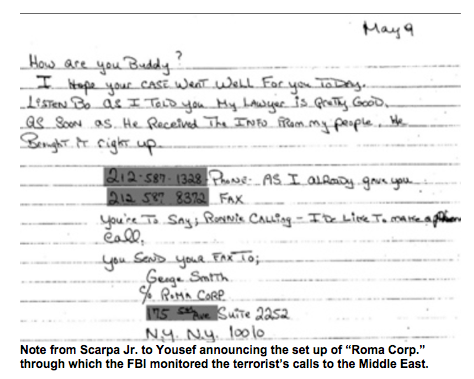
“It’s difficult to describe what a bonanza of intelligence this was for the Bureau,” says a former agent now retired from the NYO. “This was raw data, coming directly from bin Laden’s chief bomb maker, who we would later learn played a key role in designing the 9/11 plot.”[vi] The Roma Corp. patch-through would soon hand the agents of the FBI’s NYO a second chance to nab Khalid Shaikh Mohammed, Yousef’s uncle, who was now working out the details of the 9/11 plot in Doha, Qatar.
LOSING “THE MASTERMIND” AGAIN
The Congressional Joint Inquiry[vii] would eventually reveal that at least one call from the FBI patch-through went from Yousef to KSM, the fourth Bojinka conspirator still on the loose.
There are several accounts of how Yousef’s uncle was located in Qatar:
• In Perfect Soldiers, Terry McDermott’s riveting book on KSM and the 9/11 hijackers, which first appeared as a series in the Los Angeles Times, he writes that Mohammed’s brother had gone to a university in the Qatari capital, where he had formed a network of social clubs. His brother’s charitable work “apparently helped Mohammed settle quickly into Qatar society,”[viii] McDermott writes, describing KSM as “a kind of happy networker” who lived a “very public lifestyle” that “caught up with him in 1996.” 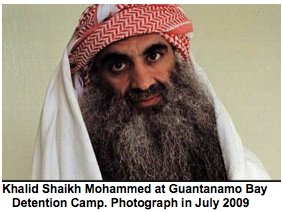
• In his book Ghost Wars, former Washington Post managing editor Steve Coll (now Dean of The Columbia University Graduate School of Journalism) writes that “The FBI had been on the lookout for Khalid Shaikh Mohammed, when, after Yousef’s arrest, investigators discovered a $660 financial wire transfer by Mohammed from Qatar to New York to aid the World Trade Center bombers.” After that, “the CIA received evidence that Mohammed was hiding in Qatar.”[ix] KSM was reportedly then tracked to the Doha water department, where he was working as an engineer.
• In Breakdown, his account of U.S. failures leading up to 9/11, Washington Times Reporter Bill Gertz attributes the KSM tip-off to former CIA operative Robert Baer.[x]
One major revelation which Baer, cited in his gripping memoir See No Evil, was that while he was hiding out in Qatar, KSM was in a cell that included Shawqi Islambuli, the brother of the EIJ fanatic who assassinated Anwar Sadat – reinforcing the tight connections between Yousef’s uncle and a man tied to the same Egyptian Islamic Jihad cell associated with al Qaeda spy Ali Mohamed. [xi]
While the location of Yousef’s uncle might have come from a combination of intelligence sources, it’s clear now that the Roma Corp. patch through allowed the FBI to pinpoint KSM’s whereabouts in Doha, then a city of 400,000 people.
Accounts differ as to what happened next.
According to famed investigative reporter Seymour Hersh, FBI Director Louis Freeh appealed directly to the Qatari government, sending a series of diplomatic notes, one of which reported that KSM was involved in a conspiracy to “bomb U.S. airliners” and was also believed to be “in the process of manufacturing an explosive device.”[xii] That account is consistent with the plan Yousef had reported to Greg Scarpa Jr. to get one of his people to place “a bomb” aboard a U.S. airliner to effect a mistrial in the upcoming Bojinka case.
Brian Ross of ABC News reported that “the FBI tracked Mohammed . . . to Doha, and was within hours of capturing him.”[xiii] Ross’s source was Jack Cloonan, a central figure in I-49, the bin Laden squad in the FBI’s New York Office. Cloonan told Ross that “a specially equipped government executive jet complete with black-out windows, was standing by to transport Mohammed.”
“We were prepared to fly the plane in and to take him out,” said Cloonan, but “somebody had leaked the information to Khalid Shaikh and he left.” Ross identified the alleged collaborator as none other than Abdallah bin Khalid al-Thani, the Qatari Islamic Affairs minister at the time.
Robert Baer told Terry McDermott that up to four passports had been supplied for KSM—the other three being for bin Laden, al-Zawahiri, and Mohammed Atef.[xiv] Bill Gertz wrote that the FBI’s HRT had been dispatched to Doha for the takedown, but were told to cool their heels in a hotel while the Qatari’s “put the handcuffs on” KSM. Then, a day later, when the agents finally went to a safehouse where KSM had been hiding, he had already fled to the Czech Republic, using the alias Mustafa al Nasir.
AL-THANI PROCLAIMS HIS INNOCENCE
For his part, al-Thani denied any connection to the 9/11 plot, even though in April 2006 a default judgment was entered against him in one of three September 11 cases in which he was a named defendant. On June 8, 2006, al-Thani’s lawyers asked a federal judge to vacate the judgment. “He does not know why he is a defendant in this multi-district litigation,” his lawyer said in a story filed by the Associated Press.[xv]
The lawyer contended that any action against al-Thani should have been dismissed because he is immune from prosecution and because the allegations are “insufficient to show that his actions were aimed at the U.S. or had any connection to the September 11 attacks.”
According to the AP story, al-Thani has held multiple key positions in the Qatari government since 1982, including commander of the army from 1984 to 1992. In 2009 he was the Interior Minister. Ironically, for a man alleged to have helped KSM escape, his current position requires him to oversee regulation of immigration and naturalization. 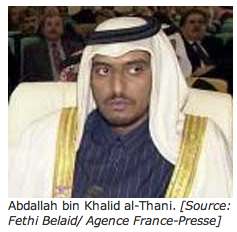
In 2005, I conducted a lengthy interview with Bathiya Coomasuru, a Sri Lankan naturalized U.S. citizen who had served as chief aide to the nephew of the former Qatari Emir, who was deposed by his son, Crown Prince Hamad bin Khalifa al-Thani, in a 1995 bloodless coup.[xvi] Al Jazeera, the Arab broadcast network which regularly airs al Qaeda’s video fatwas is located in Doha.[xvii] Coomasuru told me that a number of high-ranking members of the current Qatari government are al Qaeda sympathizers.
Several of them had boasted, said Coomasuru, that “their sons had trained in al Qaeda camps.” Coomasuru told me that he wasn’t surprised to learn that on his escape from Khartoum, bin Laden had found safe haven in Doha. “He is revered by many of the al-Thanis,” Coomasaru said.[xviii]
The irony is that Doha, the place where the “mastermind” of 9/11 hid out, is where the U.S. decided to locate the Forward Headquarters of CENTCOM, the U.S. Central Command, in preparation for the Iraqi invasion.[xix]
Three days after U.S. forces took Baghdad in March 2003, the Los Angeles Times quoted ex CIA case officer Robert Baer as describing Abdullah bin Khalid al-Thani as a potential danger to U.S. troops. When reporters Josh Meyer and John Goetz disclosed that al-Thani had become Qatar’s Interior Minister in 1997, thus putting him in charge of state security, Richard Clarke, the former counterterrorism czar in the Clinton and Bush White Houses was stunned.[xx]
“I’m shocked to hear [that],” Clarke said. “You’re telling me that [al-Thani] is today in charge of security inside Qatar? I hope that’s not true.”
If Clarke—a man who was arguably one of America’s keenest assesors of the al Qaeda threat—was surprised by this news in 2003, how easy must it have been for Osama bin Laden’s terror network to evade detection in Qatar in 1996? And worse, what potential intelligence in the Iraqi campaign may have been leaked to al Qaeda since the invasion?
Even today, “CENTCOM maintains an enormous facility in Doha,” says Lt. Col. Anthony Shaffer, the Bronze Star winner who was a key operative in Operation Able Danger, the army’s now-famous late-1990s initiative to track the al Qaeda threat. 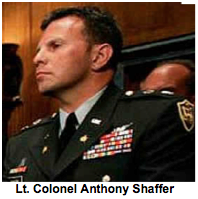
“There’s no question that if key officials of the Qatari government are sympathetic to our enemy, the potential of undermining our fight against the [Iraqi] insurgency could be profound and the intelligence losses could be huge.”[xxi]
THE YOUSEF-SCARPA JR. TREASURE TROVE
Despite the loss of KSM in Doha back in 1996, as the Bojinka trial got underway against three of his co-conspirators, Greg Scarpa Jr. was feeding FBI agents in the NYO a constant stream of intelligence from Ramzi Yousef that could have proven crucial to Patrick Fitzgerald, Jack Cloonan, and Special Agent Dan Coleman (of Squad I-49) in their ongoing effort to build a case against Osama bin Laden.
Among the many revelations contained in the FBI 302s was a plot disclosed by Yousef in which bin Laden, whom he code-named “Bojinka” or “Bojinga,” would arrange the hijacking of a series of U.S. airliners in order to free the blind Sheikh, Yousef, and his Manila cohorts. That intelligence alone was considered so important that it turned up in Presidential Daily Briefings (PDBs) to Bill Clinton in 1998 and Bush on the eve of the 9/11 attacks in August 2001. 
The Yousef-Scarpa relationship also yielded intelligence that was relevant to ongoing al Qaeda operations.
On June 25th, 1996, nineteen Americans were killed when a truck bomb ripped open the Khobar Towers complex in Saudi Arabia. The perpetrators were later identified by the FBI as Iranian Hezbollah members, but days after the bombing Yousef told Scarpa that “BOJINGA” (that is, bin Laden) was the “mastermind.” The bomb maker even boasted that he was originally tasked “to check out the security measures and that a tanker truck [to deliver the bomb] was discussed at the time.”[xxii]
In late June 2004, the 9/11 Commission concluded that “Al Qaeda . . . may . . . have played a ‘yet unknown role’ in aiding Hezbollah militants in the 1996 bombing of the Khobar Towers.”[xxiii] Keep in mind that Ali Mohamed, the FBI’s best source on al Qaeda, had first brought together Osama bin Laden and Hezbollah leader Imad Mugniyah for a terror summit in the early 1990s.
“There’s little doubt that if the FBI had fully utilized this intelligence that was coming out of Ramzi Yousef through Scarpa Jr. they could have connected major dots on al Qaeda’s strength in the summer of 1996,” says Lt. Col. Shaffer, who began investigating al Qaeda for the U.S. Special Operations Command in late 1999. “As we found, Yousef and the blind Sheikh’s cell in New York were directly connected to bin Laden and the al Qaeda leadership.”[xxiv]
But once again, just as they had with Emad Salem’s infiltration of Yousef’s first bombing cell, the FBI would fail to make the most of Scarpa Jr.’s intelligence. “The people running this [Roma Corp.] operation really didn’t have the expertise that was required,” says Larry Silverman, Greg Scarpa Jr.’s attorney. “From what I knew, they had very junior agents who were not very knowledgeable in this type of operation.”
The result was that the FBI wasn’t able to monitor Yousef’s outside calls in real time. The agent posing as a wiseguy who was monitoring the calls spoke Arabic, but Yousef, a master of six languages, was communicating in more obscure languages like Urdu and his native Baluchi.[xxv] “So while they later on may have learned what was in the conversations, they really didn’t learn live-time what was being spoken,” says Silverman.
ANNOTATIONS
[i] John Kifner, “Kahane Suspect Is A Muslim With A Series of Addresses,” The New York Times, November 7th, 1990.
[ii] List of 172 unindicted co-conspirators in U.S. vs. Omar Abdel Rahman et. al. S593CR.181 (MBM).
[iii] Yousef handwritten notes March 27th-28th, 1996, FBI 302 September 7th, 1996. Memo: Angela Clemente & Associaties “The Scarpa Intelligence on the Terrorist Threat: An Evaluative Report.” February 20th, 2005.
[iv] FBI 302 March 5th, 1996 page 4.
[v] Roma Corp “kite” May 9th, 1996. Contained as an appendix in Cover Up p. 301.
[vi] Author’s interview with confidential FBI source.
[vii] Final Declassified Report of the Joint Inquiry, July 24, 2003
[viii] Terry McDermott, “The Plot, How Terrorist Hatched A Simple Plan To Use Planes as Bombs,” Los Angeles Times, September 1st, 2002.
[ix] Ibid. Coll. Ghost Wars. p. 326.
[x] Bill Gertz, Breakdown, How America’s Intelligence Failures Led to September 11 (New York Regnery, 2002).
[xi] Robert Baer, See No Evil (New York, Crown, 2002).
[xii] Seymour Hersh, “Missed Messages,” The New Yorker,” June 3rd, 2002.
[xiii] Ibid Ross.
[xiv] Ibid McDermott.
[xv] “Qatar interior minister asks U.S. judge to scrap 9/11 case against him,” Associated Press. June 8th, 2006.
[xvii] “Al-Jazeera by Hugh Miles: The Inside Story of the Arab News Channel That is Challenging the West,” The Denver Post. May 26th, 2005
[xviii] Author’s interview with Bathiya Coomasaru, February 6th, 2005.
[xix] U.S. Department of State. Background Note: Qatar, November, 2005.
[xx] Josh Meyer and John Goetz, “War With Iraq; Qatar’s Security Chief Suspected of Having Ties to Al Qaeda; Interior minister reportedly sheltered terrorists, including 9/11 plotter. U.S. military campaign’s headquarters are in the Gulf nation’s capital.” Los Angeles Times, March 28, 2003.
[xxi] Author’s interview with Lt. Col. Anthony Shaffer, U.S. Army, June 15th, 2006.
[xxii] FBI 302 interview with Greg Scarpa Jr. re: Ramzi Yousef intelligence July 2nd, 1996.
[xxiii] Dan Eggen, “9/11 Panel Links Al Qaeda, Iran,” The Washington Post, June 26, 2004.
[xxiv] Ibid Shaffer June 15th, 2006.
[xxv] Greg Smith, “Terrorist Called Pals On Feds’ Line,” New York Daily News, September 24, 2000; Greg Smith, “FBI’s Chilling Terror Leads On ’96 Tapes.” New York Daily News January 21, 2002.




Recent Comments